Soil
Good nutrient balance makes healthy garden soils. It is beneficial to get soil tested by a state-certified laboratory. Below is a collection of our monthly tips that relate to garden soils.
Soil Tips
Bone Meal for Bulbs?Bone meal has traditionally been used as a phosphorus source for flower bulbs, but you may want to reconsider. If your soil is healthy, you may not need it and you may be better off with a balanced fertilizer designed for bulbs or even nothing at all. The nutrient content of commercial bone meal is lower than in the past due to the cleaning process, and the bone smell may attract raccoons or dogs to dig up the bulbs. |
Cover CropsYou may want to rest in the winter, but the soil life needs to remain active and protected and preferably weed-free. If you’re not planting vegetables or ornamentals in an area for a few months, try plants designed to feed the soil and the organisms that live in it. Cover crops are ideal for putting nutrients back into your soil and keeping weed growth to a minimum. Fava beans are the most popular cover crop in this area and can be seen in abundance in community gardens. Other common crops are clover, vetch, and bell beans. Different cover crops provide a variety of benefits. Beans and other members of the legume family fix nitrogen from the air and make it available in the soil and to plants. The roots also break up heavy clay soil and improve its structure. While fava beans are edible, they provide the most nitrogen to the soil if they are cut up and dug in while they are still in the flowering stage.
More Information: Choosing and Using Cover Crops |
Mulch Bare Soil Before Rains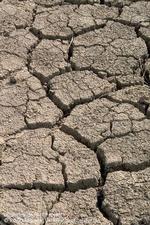
More information: Impact of Mulches |
Organic Soil AmendmentsAfter harvesting remaining summer crops, add amendments such as blood meal, alfalfa pellets or fish emulsion to replenish nitrogen in the soil. Add a layer of compost to all existing garden beds to provide needed nutrients for winter crops. Be sure to leave some areas of native soil for ground-nesting bees. |
Potting Mix vs Planting Mix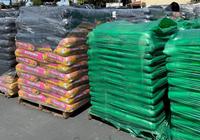
For more information: Bagged Potting Mixes |
Reusing Soil in ContainersWhen the plants are done in the containers, you can refresh the container soil without throwing it away. Start by loosening the soil and removing the plant parts. Then, add additional potting mix and some compost. The fresh material will add nutrients and organic matter for the next round of planting. Do not reuse the container soil if there have been problems with disease, insects, or weeds. Pathogens, insect eggs, and weed seeds can remain in the soil even after a plant is removed. More information: Gardeners can reuse, recycle last year's potting soil, Oklahoma State University Extension |
Sheet Mulching - "Lose the Lawn"An easy and environmentally friendly way to "lose the lawn" is to smother the grass and mulch at the same time. Place cardboard or several layers of newspaper over the area, overlapping by eight inches to keep weeds from finding openings. Wet the cardboard or newspaper, then cover it with 4-6 inches of compost, plant trimmings, or other mulch. Having wood chips on top will give it a neat appearance. The materials will gradually break down and improve the soil over time. New plants can be installed by cutting an X in the cardboard or newspaper and placing the plants right through the mulch. UC Davis Arboretum Horticulturist Stacey Parker's website shows you how it's done. |
Soil Management - Compost vs MulchMany home gardeners are confused about the terms “compost” and “mulch;” frequently these terms are used interchangeably, but they are not really the same thing. Here is a Comparison of Soil and Mulch from UCCE. Amend soil with compost to create soil that will retain water but still drain well enough for roots to have the air and water they need. Benefits of compost Benefits of mulch - Control weeds |
Soil SolarizationSoil solarization can be used to control diseases, nematodes and weeds by baking everything under plastic sheeting.The best time for solarization of soil is from June to August. Transparent or clear plastic is the best choice. Leave the soil covered for 4 –6 weeks. Refer to the UC Pest Note on Soil Solarization for Gardens & Landscapes. |
Soil TemperatureEven a warm April day doesn’t mean your soil has given up its winter chill. Planting in cold soil results in slow germination, increased risk for rot from damping off, and even stressing plants for the rest of the season. You can use a soil thermometer to check soil temperature directly by following the instructions provided here. UC lists soil temperature conditions for vegetable seed germination, or use our vegetable planting chart to look up the months best suited for planting. |
Wet SoilThe clay soils which dominate our area are particularly susceptible to compaction, especially when they have received a lot of rain. These soils are characterized by small mineral particles. Hence squeezing out the air spaces makes it more difficult for plant roots and soil organisms to get the oxygen they need to flourish. Try to avoid walking on or using heavy equipment on soil that is wet. Digging in wet soil can also destroy the structure, breaking up useful soil aggregates and earthworm tunnels. Try to wait until the soil is moist, not wet or dry, for easiest tillage. If you must walk or stand on the soil, use a board to distribute your weight over a broader area. Mulch can also create a bit of a cushion and help minimize compaction. |
Why You Should Test Your SoilBefore adding fertilizer or soil amendments to your garden, first find out what your soil really needs by conducting a soil test. Knowing your soil’s pH value is important in determining which plants will thrive or struggle in your soil. Understanding the levels of nitrogen, phosphorous, and potassium in your soil will tell you which nutrients are abundant and which are lacking. Don’t overfertilize – excess nutrients can pollute local waterways. Commercial soil testing labs provide the most thorough results, but several home kits can give you a good baseline. Test soon and be ready for spring planting. |
Will Pine Needles Acidify My Soil?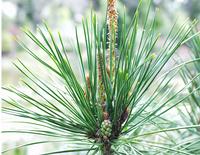
More Information: Ten Garden Myths
|
Winter Soil Health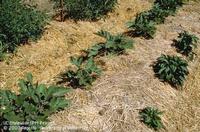
Straw mulch in vegetable garden, by Jack Kelly Clark, UC
More Information: Keep Your Soil Healthy
|
Worm Composting
The Santa Clara County Home Composting Education Program offers: |







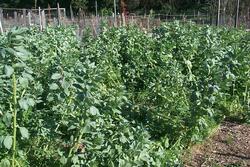
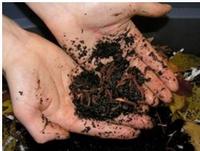 Worm composting, also called vermiculture or vermicomposting, is a convenient way to decompose kitchen waste and provide nutrient-rich soil amendments for your vegetable garden.
Worm composting, also called vermiculture or vermicomposting, is a convenient way to decompose kitchen waste and provide nutrient-rich soil amendments for your vegetable garden.